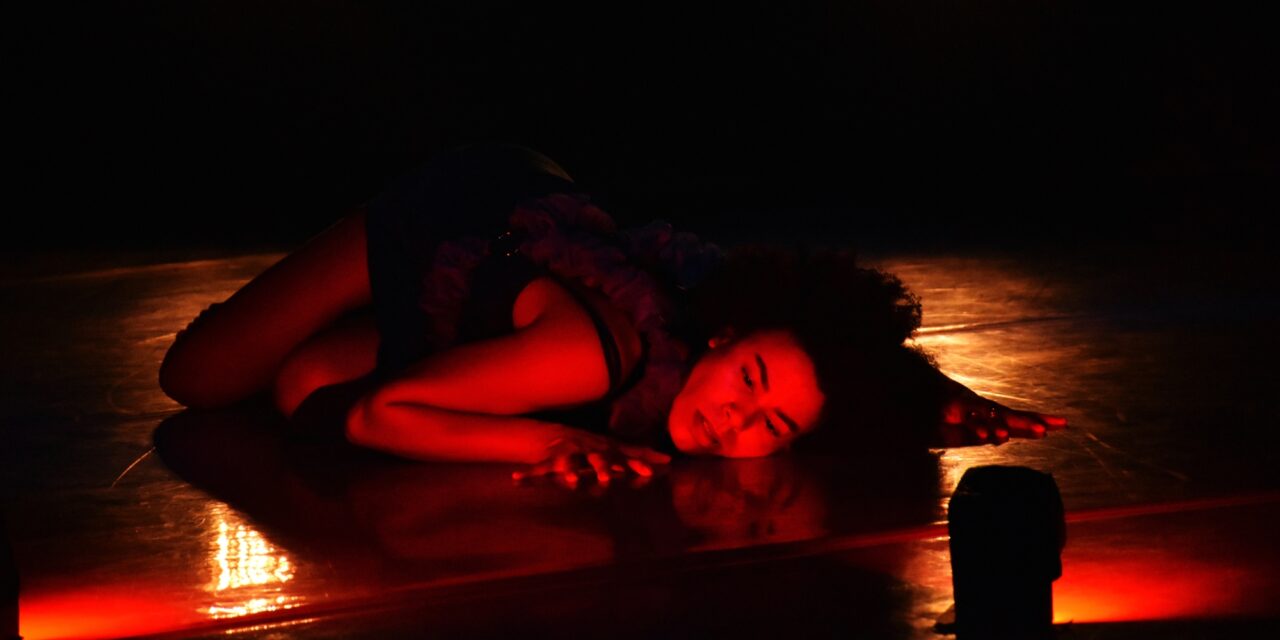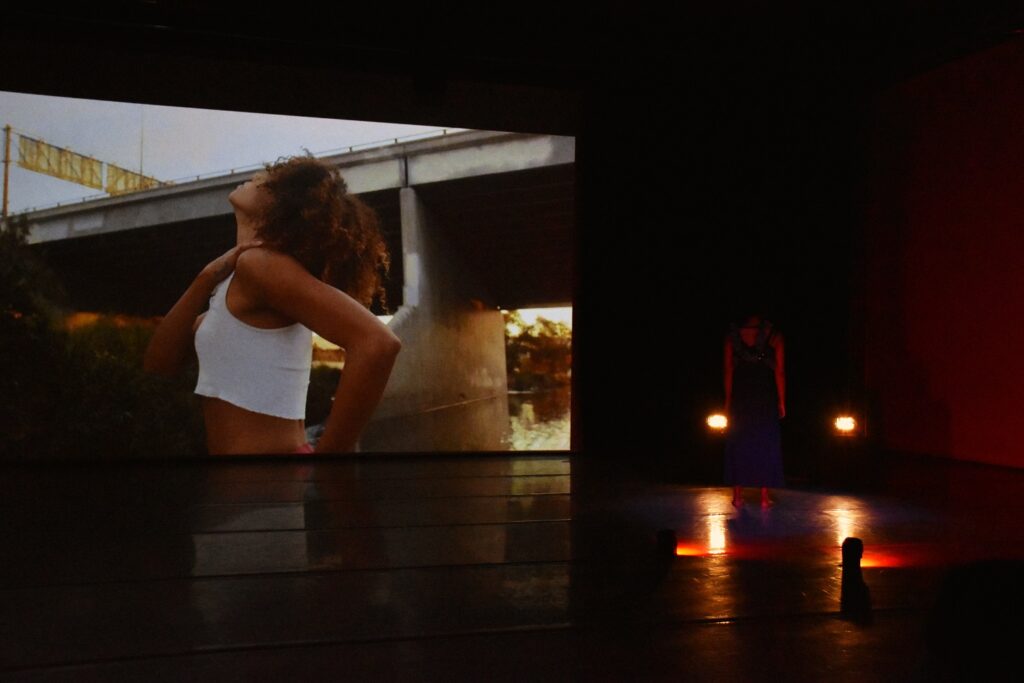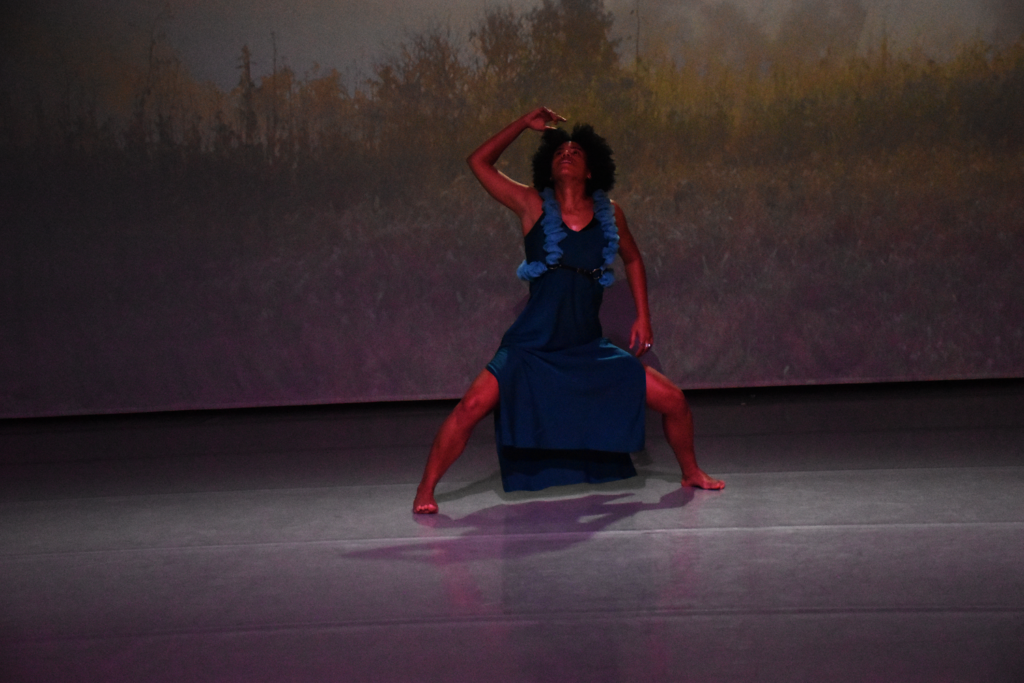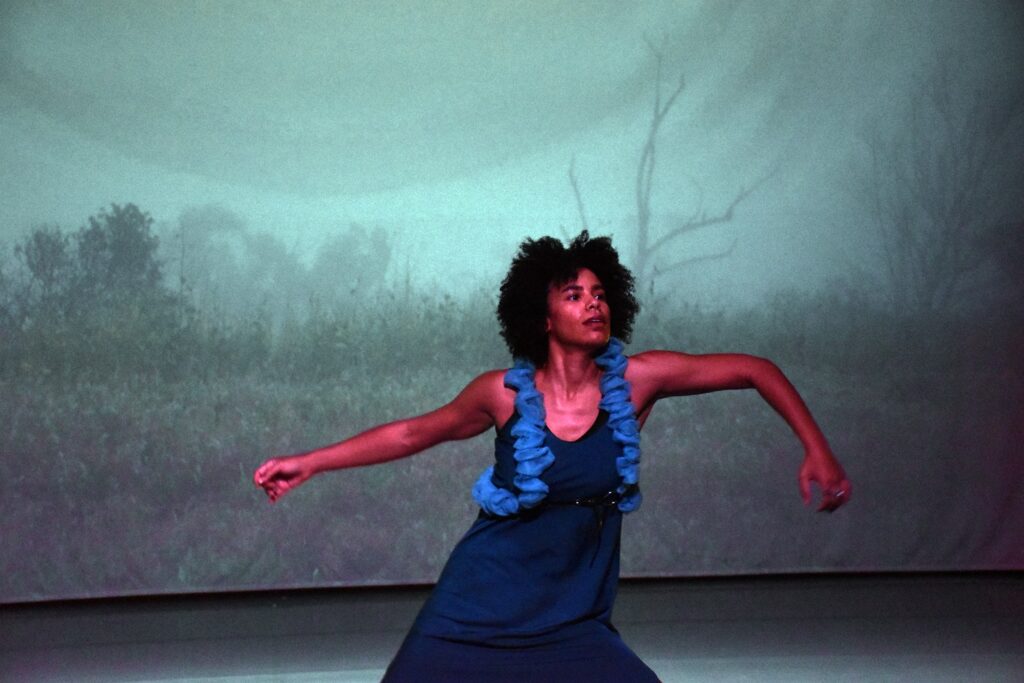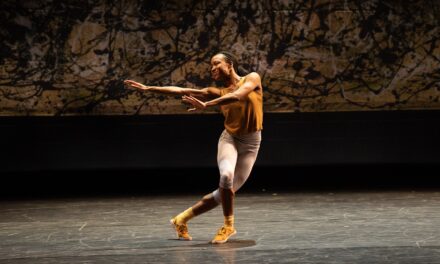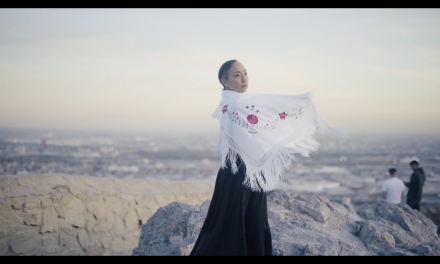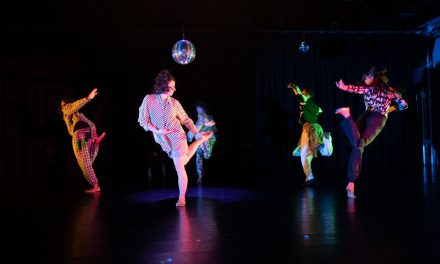Marissa Brown is “a biracial, Black and Portuguese, multidisciplinary artist.” As such, she has many ideas happening at the same time. In her piece, “Lonely Sits The City,” presented by Los Angeles Performance Practice, she has overlaid two films with a forlorn soundscape and live dancing by herself. She describes this work as “a poetic layering of dance film and live performance that reveals the quiet interior stories of Black-identifying dancers who take on angelic-like characters.”
Upon entering the space, attention is taken by a film being projected onto the back white wall of a single Black-identifying male dancer, Damontae Hack. He is in the middle of the street in a neighborhood lined with palm trees and signifying his emotional turmoil by his anxious and angst-ridden movements. He slows down at some points to digest and contemplate what he has been feeling.
On the smaller second screen on stage right is a video taken from inside a moving vehicle of the passing houses and buildings of different neighborhoods at night, all passing by in the frame of the lens like so many home movies of times and places important and noteworthy for an instant and then lost to memory. There was an intense melancholy to this work in all aspects. Although much of the movement was beautiful and well done, it was permeated with agitation and sorrow.
Almost unnoticeable up in the stage left corner is a body lying supine and not moving in front of what looks like car headlights with red taillights just downstage of them. It was in this space defined by the double set of lights on the floor that most of the live movement took place. There was a conversation between mediums and not at all a challenge for attention. The juxtaposition of live movement to film movement being complimentary.
Two other dancers on film were Maya Allen and Nadia Maryam, both having their own solo sections in different environments, one natural and one a parking lot. The movement between all four participants was mostly agitated, with periods of calm waiting or reflection.
The space at L.A. Dance Project is huge and only once did Brown venture forth from her corner spot to run down center and only then at the end. Because of her focus upstage it made the break that more engaging, but to what purpose? After this she drops her arms and calmly walks off stage down right, commentary finished.
The music and sound backdrop was by Isaac Middleton and Ashley“Robi” Robicheaux. This tapestry of sound lent a great deal to the emotive feelings expressed onstage and in the films. It seemed a saddened response to paths untaken and limits imposed so that only disappointment remains.
To learn more about Marissa Brown, please visit her website.
To learn more about Los Angeles Performance Practice, please visit their website.
To learn more about the 10th LAX Festival and to purchase tickets, please click HERE.
Written by Brian Fretté for LA Dance Chronicle.
Featured image:

